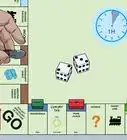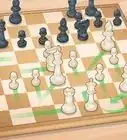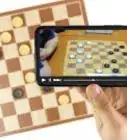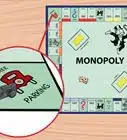This article was co-authored by Jessie Davidson. Jessie Davidson is a Child Care Specialist and the CEO and Founder of BabysitPro, which provides online courses for current and aspiring babysitters. Jessie has over 20 years of childcare experience and specializes in best practices for sitters of infants, toddlers, preschoolers, and grade-schoolers. BabysitPro’s courses are unique and age-specific so babysitters can learn detailed information relevant to the children they babysit. Jessie holds a BA in French Studies from Wheaton College and an MA in Visual Anthropology from The University of Southern California.
This article has been viewed 743,234 times.
The game Snakes and Ladders has enthralled generations of children, and gone through a few name changes along the way. Sometimes sold as Chutes and Ladders in the United States, and originally Snakes and Arrows in India, the game has barely changed in all this time. If you've lost the rules or you've made your own Snakes and Ladders board, you may want to review the rules before you play or perhaps try a variation on the traditional rules.
Steps
Playing the Snakes and Ladders Board Game
-
1Understand the object of the game. The object of the game is to be the first player to reach the end by moving across the board from square one to the final square. Most boards wrap back and forth, so you move left to right across first row, then move up to the second and move right to left, and so on.[1]
- Follow the numbers on the board to see how to move forward. For example, if you rolled a five and you were on space number 11, then you would move your game piece to space number 16.
-
2Decide who goes first. Each player should roll one die to see who gets the highest number. Whoever rolls the highest number gets to take the first turn. After the first player takes a turn, the person sitting to that player’s left will take a turn. Play continues in a circle going left.
- If two or more people roll the same number, and it is the highest number rolled, each of those people roll the die an additional time to see who gets to go first.
Advertisement -
3Roll the die and move. To take your turn, roll the die again and read the number that you rolled. Pick up your game piece and move forward that number of spaces. For example, if you roll a two, move your piece to square two. On your next turn, if you roll a five, move your piece forward five squares, ending up on square seven.[2]
- Some people play that you can only move onto the board if you roll a one, and if you don't get a one, you just skip your turn. This isn't recommended, since this can be frustrating for unlucky players.
-
4Climb up ladders. The ladders on the game board allow you to move upwards and get ahead faster. If you land exactly on a square that shows an image of the bottom of a ladder, then you may move your game piece all the way up to the square at the top of the ladder.[3]
- If you land at the top of a ladder or somewhere in the middle of a ladder, just stay put. You never move down ladders.
-
5Slide down snakes or chutes. Some versions have snakes on the board, while others have chutes (slides). Snakes (or chutes) move you back on the board because you have to slide down them. If you land exactly at the top of a snake or chute, slide your game piece all the way to the square at the bottom of the snake or chute.[4]
- If you land on a square that is in the middle or at the bottom of a snake (or chute), just stay put. You only slide down if you land on the top square of a snake (or chute).
-
6Take an extra turn if you roll a six. If you roll a six, then you get an extra turn. First, move your piece forward six squares and then roll the die again. If you land on any snakes or ladders, follow the instructions above to move up or down and then roll again to take your extra turn. As long as you keep rolling sixes, you can keep moving![5]
-
7Land exactly on the last square to win. The first person to reach the highest square on the board wins, usually square 100. But there's a twist! If you roll too high, your piece "bounces" off the last square and moves back. You can only win by rolling the exact number needed to land on the last square.[6]
- For example, if you are on square 99 and roll a four, move your game piece to 100 (one move), then "bounce" back to 99, 98, 97 (two, three, then four moves.) If square 97 is a snake head, slide as usual.
Adding Variant Rules
-
1Use a faster victory rule. Having to land exactly on the final square makes the game more exciting, since it gives people a chance to catch up, but it can also make the game take too long. Instead, you can let people roll higher than they need to reach 100.
- For a little more excitement, when someone reaches or passes 100, give each other player one turn to try to beat them. If someone would end up higher (such as 104 instead of 101), he wins. Two or more people can tie and win together this way, if they end up on the same square.
-
2Add a little strategy. Have each player play with two game pieces, each the same color so no one gets confused. When you roll the die, you can move one of your two pieces by that amount. You need to have both of your pieces reach the last square in order to win.[7]
-
3Compete with your opponent. In this variation, each player starts on square one. To take your turn, roll two dice instead of one. Choose one die and move your piece forward by that amount. With your remaining die, you can move another player forward by the amount on that die.[8]
- For a much "meaner" variation, and potentially a much longer game, whenever you land exactly on the same square as another game piece, the piece that was already there moves all the way back to the beginning, and has to roll to get on the board again.
-
4Make the game educational. Making your own Snakes and Ladders set is quite easy, as described in the tips. You can add your own touch by writing words, trivia questions, or other educational material in some or all of the squares. Here are some ideas:
- For kids learning to read, write a simple word in each square. When a player moves his piece, he reads out each word he passes through.[9]
- Use the snakes and ladders to teach good ideas and discourage bad ones.[10] For example, a ladder could travel from "I did my homework." to "I got good grades." A snake could go from "I didn't eat any fruits or vegetables today." to "My stomach feels bad."
- As a babysitter, you can be proactive about playtime.
- You can take this board game to keep the kids engaged.
- It will be exciting for them, and the parents will be happy that you have come well-prepared.
Community Q&A
-
QuestionIf I am on 96 and 6 falls on the dice, what should I do? Move forward or wait until I get 4 on the dice?
 Community AnswerYou need to wait to you get four, or you can also do the four steps and do two backwards which will make up six spaces. Everyone has their own rules, so ask your fellow players.
Community AnswerYou need to wait to you get four, or you can also do the four steps and do two backwards which will make up six spaces. Everyone has their own rules, so ask your fellow players. -
QuestionCan I make my own rules in Snakes and Ladders?
 Community AnswerAs long as everyone who is playing agrees to play by those rules, sure.
Community AnswerAs long as everyone who is playing agrees to play by those rules, sure. -
QuestionWhere do you put the snakes and ladders?
 PlantsvszombiesCommunity AnswerThe snakes and ladders are printed onto the board. If making your own, copy from Google.
PlantsvszombiesCommunity AnswerThe snakes and ladders are printed onto the board. If making your own, copy from Google.
Warnings
- Don't use any variation unless all of the players agree before you begin the game.⧼thumbs_response⧽
- Make sure your checkers are of different colours - having the same colours as another player can be annoying or frustrating!⧼thumbs_response⧽
Things You'll Need
- Snakes and Ladders board (commercially produced or homemade)
- One game die (or more if you want a harder game)
- One marker per player (for example, a coin, a bottle top, a plastic piece etc.)
- At least two people
References
- ↑ http://www.fwtwr.com/postal_games/snakes_ladders.htm
- ↑ http://www.fwtwr.com/postal_games/snakes_ladders.htm
- ↑ http://www.fwtwr.com/postal_games/snakes_ladders.htm
- ↑ http://www.fwtwr.com/postal_games/snakes_ladders.htm
- ↑ http://www.unesco.org/education/educprog/ste/pdf_files/games/snakes.pdf
- ↑ http://www.fwtwr.com/postal_games/snakes_ladders.htm
- ↑ http://boardgamegeek.com/thread/375400/snakes-and-ladders-possibly-best-value-game-ever
- ↑ http://icehousegames.org/wiki/index.php
- ↑ http://www.sightwords.com/sight-words/games/snakes-ladders/
About This Article
Snakes and Ladders is a fun board game for 2 or more players where players race to get to the end of the board first. To start the game, have each player place a token on the starting square on the board. Then, everyone rolls the dice and the player with the highest roll goes first. On your turn, roll the dice and move that number of spaces. If you land on the bottom of a ladder, climb up the ladder to the space at the top. If you land on the head of a snake, slide down the snake to the space at the tail. Play continues clockwise until one player reaches the last square on the board first and wins! For variations on this classic game, read on!

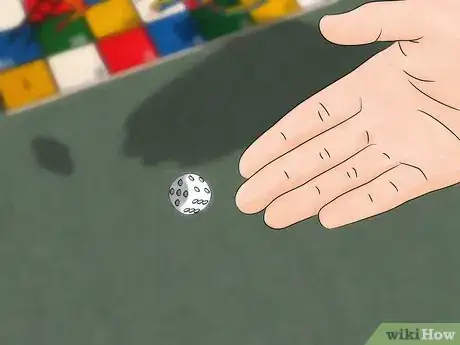
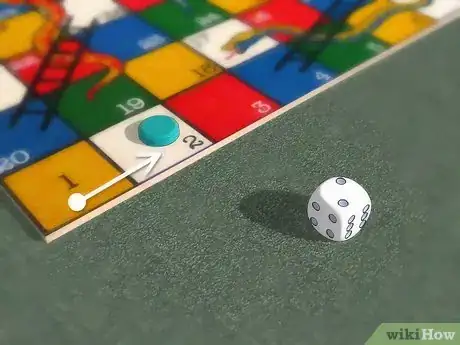

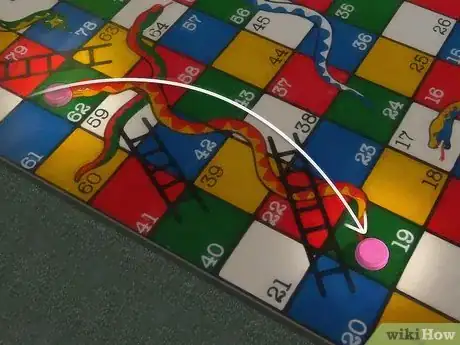

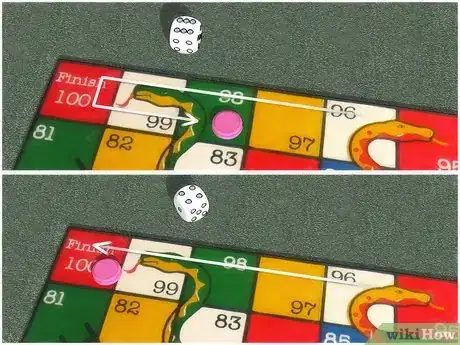

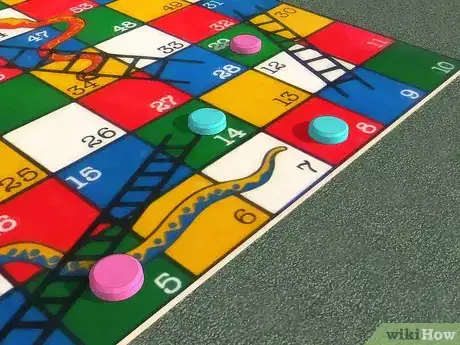
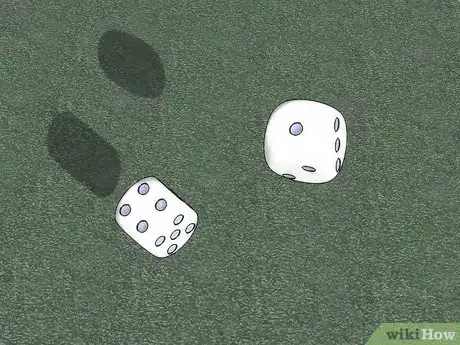
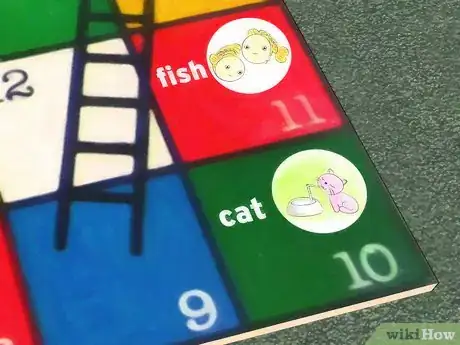
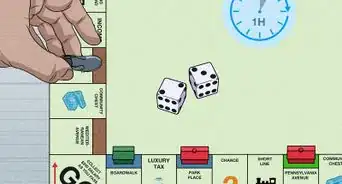
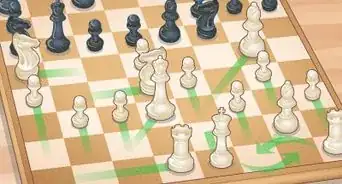

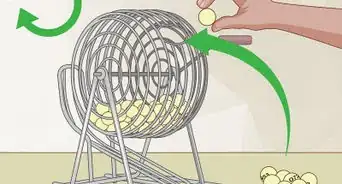



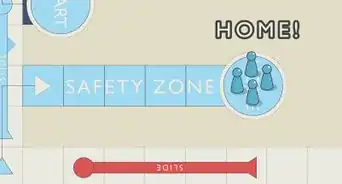
-Step-10-Version-2.webp)












